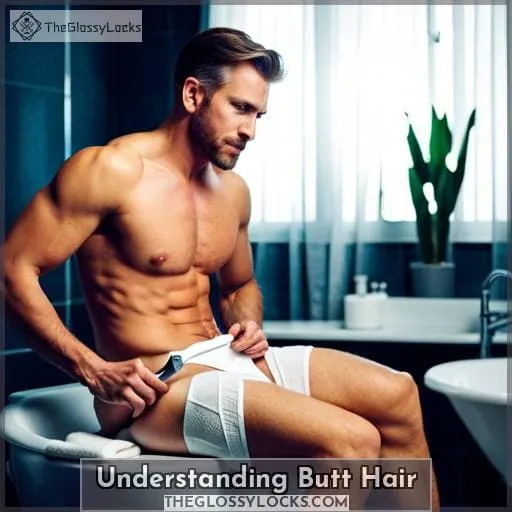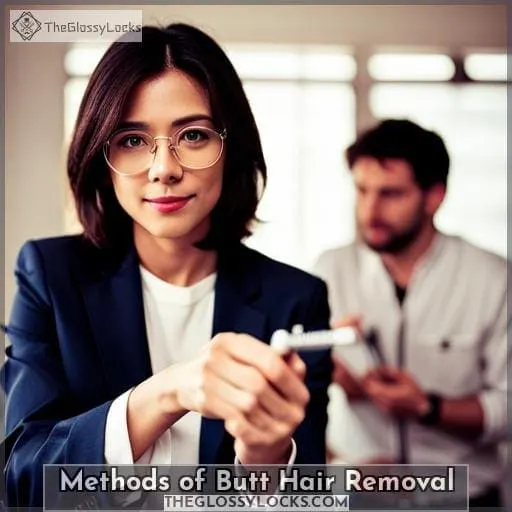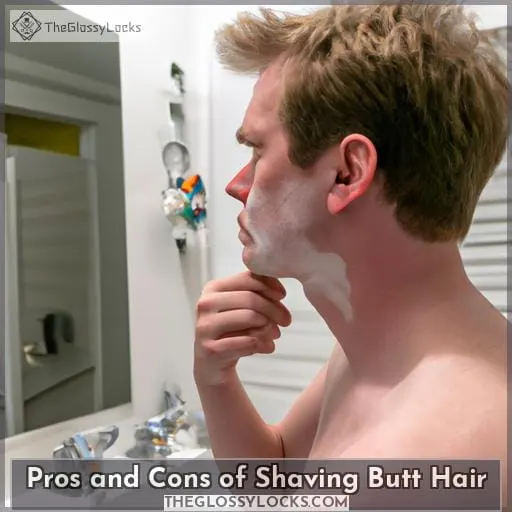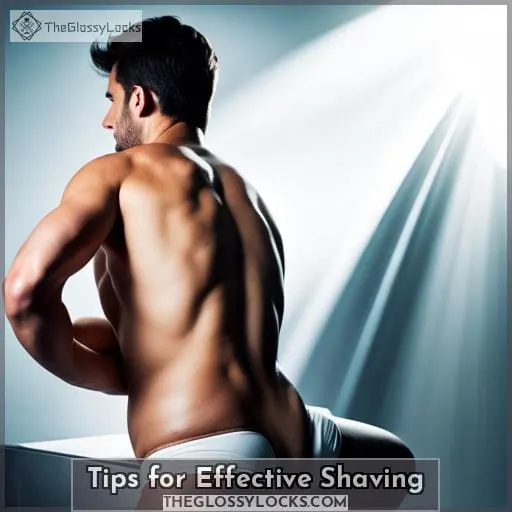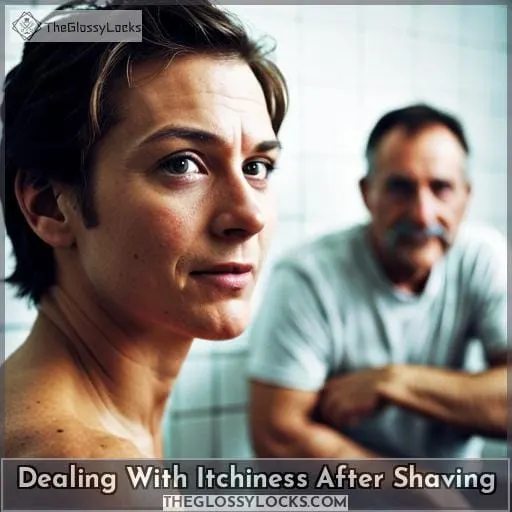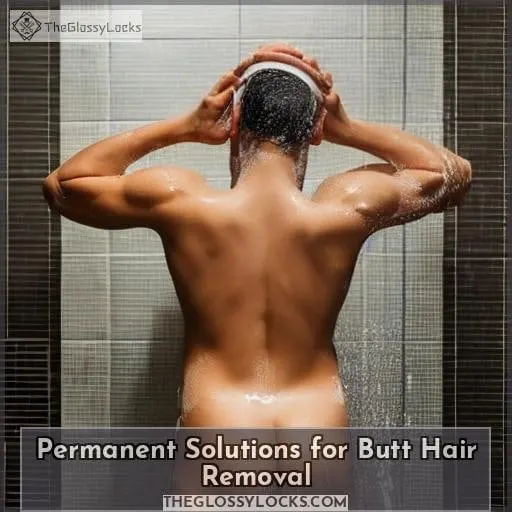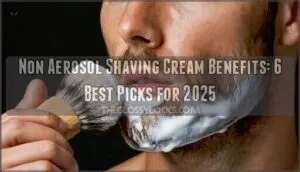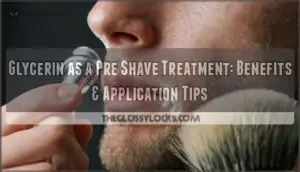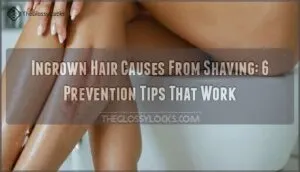This site is supported by our readers. We may earn a commission, at no cost to you, if you purchase through links.
You’ve probably heard that having a smooth, hair-free ass is more hygienic and can even be sexy. But you may have also heard horror stories of itches, rashes, and ingrown hairs from shaving your bum.
In this article, we’ll cover how to shave your ass safely so you can enjoy all the benefits without any of the pain. We’ve got you covered from what supplies are needed to tips for avoiding itchiness after you shave.
Table Of Contents
Key Takeaways
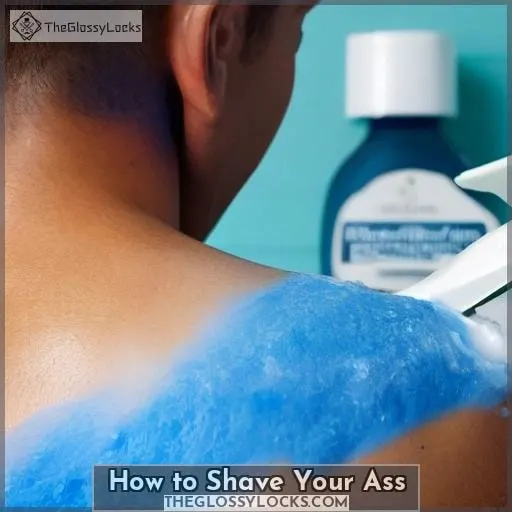
- Proper hygiene is important before and after shaving to prevent infections.
- Exfoliating before shaving can help avoid skin irritation from ingrown hairs.
- Using products specifically designed for intimate areas, such as Manscaped’s flat head trimmer, can make shaving easier.
- Alcohol-free moisturizer can soothe inflammation and prevent ingrown hairs.
Understanding Butt Hair
Having butt hair can be a source of embarrassment, but understanding it is the key to feeling more confident and comfortable in your own skin. Its purpose may have evolutionary advantages, such as avoiding sweat or preventing chafing when sitting for long periods.
Butt hair also serves an aesthetic purpose that is up to personal preference, whether you choose to remove it or not. Laser Hair Removal offers permanent results but can come with a hefty price tag, while laser removal creams offer short-term solutions at lower costs.
Dr. Tiffany Clay provides tips on effective Dry Shave methods, which require supplies like a bikini trimmer, razor, shaving cream, and mirrors for better visibility while trimming all areas properly without missing any spots! Make sure you exfoliate before using any method mentioned above so your skin doesn’t get irritated afterward from ingrown hairs/folliculitis caused by improper dry shave techniques.
Reasons to Remove Butt Hair
You might be wondering why you should remove your butt hair. Well, there are several reasons! Sweat can easily accumulate in the area if it’s not properly groomed, and that can lead to a very uncomfortable situation.
Secondly, dingleberries can also be an issue if your butt hair is too long or curly, as they tend to get caught in the strands, which makes hygiene difficult.
Avoiding a Sweaty Butt
Removing your butt hair can help prevent sweat and chafing, making you feel more comfortable in any situation. Manscaping deals from Manscaped are great for keeping up with regular trimming or waxing, while laser treatment offers permanent results but comes at a higher cost.
Dr. Tiffany Clay suggests using small facial trimmers to avoid ingrown hairs when shaving butt hair.
Hair removal creams offer fast solutions that don’t involve razor blades and mirrors for better visibility during trimming all areas properly without missing spots – these are the best tips out there. Rust prevention for blades
! Be sure to keep up with your hygiene habits regularly to stay fresh and confidently show off those buns!
Dinglesberries Can Be a Problem
Forgetting to remove your butt hair can lead to dingleberries, which no one wants! Avoiding sweat and chafing is why many opt for waxing, laser treatments, or Manscaped products. For those looking for a less painful alternative, using a bikini trimmer with some shaving cream will do the trick.
Hair regrowth after any method of removal happens quickly and could be uncomfortable, but this should not deter you if personal preference or hygienic reasons come into play. Anal hair has both aesthetic purposes as well as an evolutionary advantage, but ultimately depends on what makes you feel most comfortable.
Methods of Butt Hair Removal
You may be wondering how to remove butt hair. Waxing or sugaring are popular options that leave your skin feeling smooth and silky for weeks at a time. Hair removal cream can also do the trick, albeit with mixed results due to its caustic nature.
It’s often best used in conjunction with other methods like trimming. Lastly, trimming your butt hairs is the most common and painless method of all.
Waxing or Sugaring
Waxing or sugaring your butt hair can be a great way to keep it groomed without irritation, ingrown hairs, and itchy regrowth. When treating sensitive areas like the buttocks, use extra caution when waxing – make sure to prep the skin with oil beforehand.
Pain management is key here! Also, consider that waxing can promote faster hair growth in the long run than shaving butt hair, so this should also be taken into account for skincare purposes.
Safety precautions are paramount. Using a smaller hand-held applicator ensures better accuracy and minimal risk of skin irritation from excess product on larger parts of the body.
Hair Removal Cream
If you’re looking for a less painful option, hair removal cream can be the perfect solution for removing unwanted butt hairs. It’s cost-effective and easy to use – just apply it directly onto your skin! You’ll need to leave it on according to directions, then wipe away with warm water.
Here are some benefits of using hair removal cream:
- Quick results without irritation or ingrown hairs
- Cost analysis – cheaper than laser treatment and discount codes available
- More hidden butthole options like waxing & shaving butt hair
- Reaches all areas including hard to reach spots like between the cheeks and around follicles.
Hair removal creams offer an effective way of getting rid of that pesky butt hair while avoiding irritating side effects from other methods such as shaving or waxing.
Trimming
Trimming your butt hair is an easy and painless way to keep it in check. Before starting, make sure you’re using a small trimmer designed for sensitive areas. Pre-shave preparation includes cleaning the area and trimming any long hairs with scissors before taking time in front of your bathroom mirror.
Safe shaving techniques include going slow, using short strokes, and not pressing too hard on the skin to avoid ingrown hairs or folliculitis. While trimming may not be a permanent solution like laser treatment, it does offer longer-lasting results than simply shaving butt hair, which leads to faster regrowth.
| Pros | Cons |
|---|---|
| Quick & Painless | Not a Permanent Solution |
| Easy Maintenance | Hair Regrowth Will Occur |
| No Skin Irritation | Requires Regular Upkeep |
Pros and Cons of Shaving Butt Hair
You may be considering shaving your butt hair for either hygiene or aesthetic reasons. However, it’s important to understand the pros and cons of this method before committing. On one hand, comfort while wearing a thong is often cited as an advantage. However, itching due to irritation or ingrown hairs/folliculitis can occur after shaving, making the process less desirable.
Dr. Tiffany Clay provides tips on effective shaving so that you can make an informed decision about whether it works for you.
Pros
Shaving your butt hair can bring a feeling of comfort while wearing a thong or to suit personal preferences.
Laser hair removal may seem like the perfect solution, but this expensive treatment has its limitations; you might end up with a skinned knee if you try too hard! Avoiding annoying itchy discomfort after shaving is an impossible task for some, however, there are benefits that come from removing your butt hair.
When done correctly, trimming or using clippers are effective ways of preventing ingrown hairs while also avoiding overly long regrowth which can lead to more annoying itching down the road.
Cons
Though it may seem like a convenient solution, removing butt hair can come with its own set of downsides. These range from skin irritation to unsightly ingrown hairs. To avoid sweat and dingleberries prevention, many use hair removal cream.
However, this can lead to more irritation or little cuts if not applied properly. Laser hair removal is an option, but the cost makes this method far less viable than other methods such as trimming or using clippers.
Shaving does require maintenance, and even when done correctly, there is still a tiny bit of discomfort involved due to stubble regrowth as well as the less likelihood of avoiding ingrown hairs altogether.
Tips for Effective Shaving
Shaving your butt hair can be a personal preference for hygiene or aesthetic reasons. To get the most out of this process, you will need supplies such as a bikini trimmer, razor, shaving mirror, and cream.
The best way to trim butt hair is with the trimmer as it gives you full control over how much hair is being removed.
Supplies Needed
To groom your butt hair effectively, you’ll need some essential supplies like a bikini trimmer, razor, shaving mirror, and cream. Avoid sweat and ingrown hairs by following trimmer tips from Dr. Tiffany Clay or opt for a permanent solution with laser removal–just be sure to use discount codes! Shaving butt hair is all about personal preference – just remember how to shave your butt safely with the right tools so you can maintain hygiene without irritation.
Best Way to Trim Butt Hair
Trimming your butt hair with a facial or bikini trimmer is the best way to get an effective and comfortable shave. Dry shaving can reduce irritation, but it’s important to follow safety tips from experts like Dr.
Compare cost options between laser removal, waxing, and trimming before making any decisions. Manscaped offers discount codes for male grooming products too! With the right supplies, you’ll be able to achieve a smooth finish without worrying about expensive treatments or painful irritation.
Just remember that cutting too close may lead to more issues than you bargained for in terms of comfortability.
Using a Mirror
Achieving a smooth shave requires more than just a trimmer – you’ll need to enlist the help of a mirror! A shaving mirror gives you an all-encompassing view, so you don’t miss any spots and can get rid of every single hair.
Shaving cream can reduce irritation, while manscaping tips from experts like Dr. Tiffany Clay guide on how to avoid ingrown hairs or discomfort after laser hair removal alternatives. Investing in the right supplies for your butt grooming needs will ensure that each trim is comfortable and effective with no room for error.
Dealing With Itchiness After Shaving
After shaving your butt hair, you may experience some itchiness or irritation. To avoid this and ensure a smooth shave, it is important to do proper pre-shave prep work and choose the right razor for the job.
Start by thoroughly cleaning the area with an exfoliating scrub that will remove any dirt residue from deeper follicles. Selecting a new multi-bladed razor will provide greater accuracy when trimming hairs in tighter areas.
After completing your shave, use warm water to rinse away any remaining cream or soap residue, which can also cause irritation on sensitive skin types. A good post-shave routine also involves using an alcohol-free moisturizer, which helps soothe inflammation as well as prevent ingrown hairs from forming due to friction caused by clothing or exercise activities such as running and cycling.
Laser removal is another option, but one that comes at considerable cost – averaging around $285 per session – yet provides permanent results compared with other methods of hair removal like waxing creams, etc.
To maintain healthy skin after shaving your butt hair, make sure you are following all these steps every time you go through this process!
Permanent Solutions for Butt Hair Removal
If you’re looking for a permanent solution to get rid of your butt hair, laser hair removal is the most effective option. Lasers use light energy to target and destroy individual hairs while avoiding sweat glands and skin tissue.
It’s an expensive procedure that will need multiple sessions over time, but it offers long-lasting results with minimal discomfort or side effects.
Sugaring wax can also be used as a more natural alternative if preferred. Hair removal creams are another popular choice due to their ease of use; however, they may cause irritation in some people, so always test on a small area first before using them on larger areas such as the buttocks region.
Trimming tips include shaving with short strokes in one direction only and using scissors instead of electric trimmers, which can mistakenly cut too close, making nicks or cuts painful afterwards – ouch!
Finally, no matter what method you choose, remember to keep up good hygiene habits like washing after each session so any residue from products doesn’t clog pores resulting in ingrown hairs or infections later down the line!
Frequently Asked Questions (FAQs)
Is it safe to use a razor on my butt?
Shaving your butt with a razor is possible, but it’s important to be mindful of the potential risks. Visualize yourself properly prepping for a safe shave by stocking up on supplies like trimmers, creams, mirrors, and razors.
Are there any natural alternatives to removing butt hair?
Yes! Natural alternatives to removing butt hair include waxing, using a depilatory cream, and trimming.
How long will the results of shaving my butt last?
Shaving the hair on your butt may provide temporary relief, but the effects will not endure for long. It is advisable to trim frequently or consider laser hair removal for a more permanent solution.
What is the best way to avoid skin irritation while shaving?
To avoid skin irritation, always use a sharp razor and shaving cream. Trim hairs with a facial or bikini trimmer first for the best results. Then lather up your skin with shaving cream and shave in the direction of hair growth to prevent nicks and cuts.
Is there a risk of infection when removing butt hair?
Yes, there is a risk of infection when removing butt hair. To minimize this, use an antiseptic before and after shaving to reduce bacteria that can cause skin infections. Always keep the area clean and dry to prevent itching or irritation from developing afterward.
Conclusion
Whether you’re seeking a temporary or permanent solution to your butt hair woes, there’s an option out there for you. On average, the cost of laser hair removal is $285, which is a relatively small amount to pay for a lifetime of smoothness.
From waxing to trimming to permanent solutions, it’s important to conduct thorough research, seek advice from professionals, and equip yourself with the right supplies. With nearly 20 million Americans grooming their butts, it’s a trend that shows no signs of slowing down.

